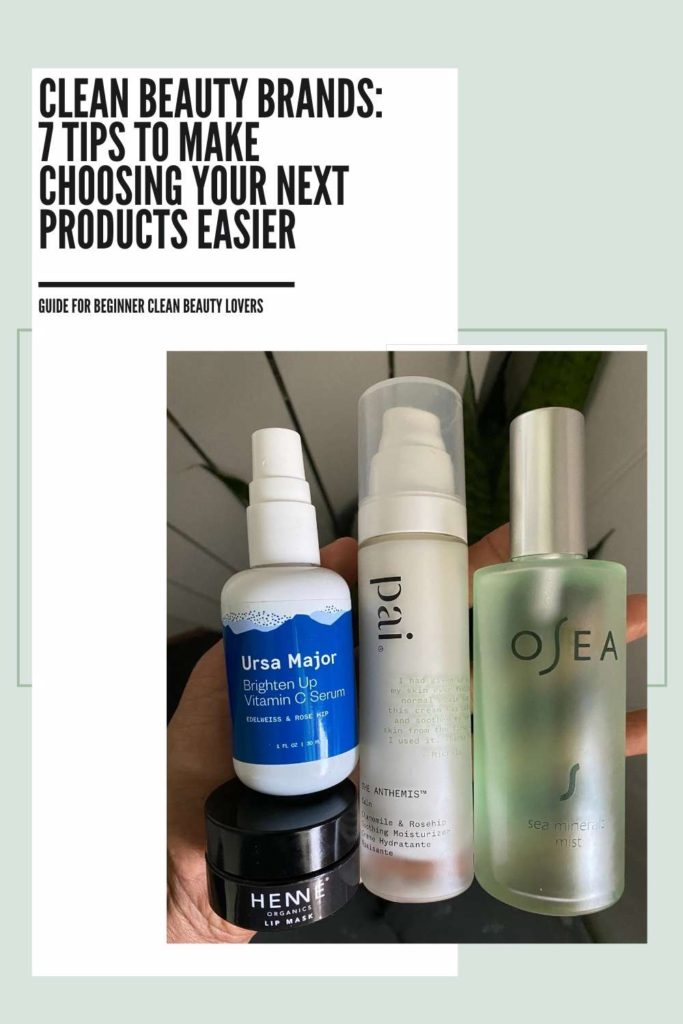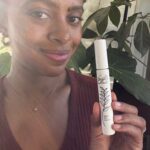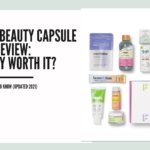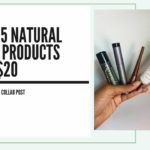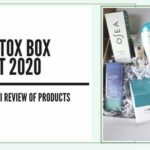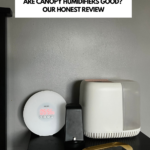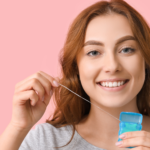Clearing out your skincare and makeup collection to make room for cleaner beauty products with more natural ingredients can be SUPER tricky. Nowadays, every other product claims to be “all natural” or “naturally derived” or something in between. But, do most of us really know what that even really means?
How can we tell if beauty products we use are clean?
Here are 7 go-to tips I’ve developed over the years to help make buying natural and low/non-toxic skincare products easier. And YES these tips can be used for just about every brand on the market.
#1. Look For Products With Fewer Ingredients
First things first, please know that a product’s label is your best friend! Or at least it has the potential to be. Whether it’s personal care products, makeup products, food, or cleaning products, always look for ingredient lists available on the back of the container or on the brand’s website.
Increasingly here in the United States, brands are being held more accountable for disclosing what’s used in their products. This is even more true in the natural products niche.
As a general rule of thumb, I opt for products that have fewer ingredients.
But, you might be thinking “Fewer than WHAT?”
Great question!
In the past, shelves were filled with tons of products with long lists of ingredients which included potentially harmful ingredients and toxic chemicals. There are definitely still some on the shelves, but lets pretend it’s 5-10 years ago. Or better yet, your childhood years.
Many of those brands and conventional products we’ve come to recognize and have brand loyalty (through creative marketing) to had long lists of ingredients we never questioned. What made it worse, many of these brands were under no obligation to even disclose the ingredient list in the first place.
Over time, we became used to using products with ingredients we couldn’t pronounce or knew their natural sources.
Those long lists of ingredients are what I try to avoid.
I try to research many known ingredients using websites such as the Environmental Working Group, and the Think Dirty App.
One bonus of using products with less ingredients is that some can be used on multiple parts of the body, reducing my need for excessive products. I’ve shared about some of my favorite everyday products in this post.
#2. Aim For Products With Less Unrecognizable Ingredients
With the increase of demand for clean and nontoxic products, many brands are not only disclosing their ingredients right on the label, but also making it easier for consumers to understand what the ingredients are.
While many skin care products list the scientific names of the ingredients, they are also stating the “more commonly known as” name as well. Having this right next to the scientific name shows transparency, builds trust, and makes label reading a learning opportunity for the consumer.
If a product uses too many unrecognizable ingredients without further explanation of what it may be known as, I try to stay away from it altogether.
#3. Look For Brands That Share Their Ingredients Willingly
This should’ve been higher on the list, but now you can see how truly important having access to a brand’s ingredient list is.
Safe cosmetics and skincare should not make you have to work to find out what’s in their products. PERIOD!
If the brand is truly using clean ingredients, they should want it front and center, available for anyone to check out. It should not be hidden in a deep database where only the product developers have access to it.
Regardless of how expensive, fancy, or popular a product is, if it does not have the ingredient list on the box or container, I but it back. If the label is small and unable to fit the text of a label, I check the brand’s website. If it’s not there, it’s a no.
While that is not yet a hard and fast requirement from the Federal Trade Commission, it is a guideline I share with my Health Coaching clients all the time.
At the very least, we should have the choice to check out the ingredients of any given product before we purchase it.
#4 Pay Attention To The Order Of The Ingredients On The Label
A little known piece of information about the ingredient list is there is actually a method to it’s madness. While the active ingredients may be showcased on the front of the label as a selling point, it’s contributing role in the formulation may in fact be very little.
Ingredients on food, cleaning, and beauty product labels are listed in order of predominance in the formulation. If it’s listed first, its used in a greater amount compared to what’s 4th or last. Listing in this order allows for consumers to make the conscious decision to purchase a product that may have some potentially hazardous chemicals listed last, at a more affordable price compared to another product that’s more expensive. That can make buying cleaner beauty products more accessible compared to only having products available which have those same ingredients listed first.
As an advocate for everyone having access to cleaner products so they are able to pursue a healthy lifestyle, spreading this little tip is so important.
#5 Avoid Products That List “Fragrance” As An Ingredient
No, I’m not saying to opt for fragrance free products all the time. Believe it or not, even some fragrance free products still have proprietary fragrances in them.
The term “fragrance” is an umbrella term brands are not yet mandated to disclose in regards to the ingredients they use to create this scent. Brands may also use the term “parfum” or any other variation.
Fragrance can be any number (hundreds to thousands) of chemicals used to help create the scent in a product. And they do not have to share what those list of chemicals are. This is the same as the term “natural flavors” used in foods.
The biggest issue with this is the potential for endocrine disruptors being used in these products.
Endocrine disruptors are chemicals that mimic the natural behavior of hormones and catalysts in our body. I like to think of them as little foreign invaders that enter our system that can fit into the receptors of our normal hormonal functions.
This is a problem for everyone, but especially for those with hormonal sensitivities, imbalances, teens, and even children. This can also cause someone to have an allergic reaction.
While there is no way to completely be sure a brand has shared the fragrance source in their products, I avoid products that contain artificial fragrances, look for products with essential oils if I desire a scent, or accept that I will have to purchase the fragrance free option.
#6 Research Ingredients That Are Banned In The EU
This may sound a little crazy, but hear me out.
There are a lot of ingredients that are used in the U.S. for food and beauty products which are banned in other countries. Especially in the European Union!
Other countries have done their own research on the potential effects of some of the controversial ingredients that are still allowed in popular foods and beauty products, and decided they are not okay with it being sold on their shelves.
In fact, there are lots of products that have one version sold in the U.S. and another sold overseas with fewer, more natural ingredients. I’ve seen it!
So, if you’re really ready to up your clean beauty options, start researching lists of ingredients banned in the EU within the clean beauty space. I promise you, your natural beauty routine will never be the same.
#7 Don’t Make Assumptions About A Brand Or It’s Entire Line
As the shelves continue to get saturated with products highlighting their use of non-toxic ingredients, it might feel like it’s hard to trust any one brand to deliver truly safe products.
But, please don’t fear.
If there’s one thing I’ve learned over the last 7-ish years, it’s not to judge a product by it’s brand. Well, mostly. (There is absolutely a very short list of brands you will NEVER catch me purchasing from even if they make the cleanest of clean products),
As you get more familiar with common ingredients used in the clean beauty space, things will get much easier. You will start to learn how to quickly scan a label and see if the product is for you.
And, some brands you might’ve never guessed would create a super clean product will come out with something that will surprise you. It’s happened…A LOT!
That’s why I highly recommend using the Environmental Working Group’s app when shopping in store. You can simply pick up almost any product on the shelf, scan the label, and get a picture on how clean a product is.
If you are shopping small, they may or may not be in the EWG database. It takes a little of hoop jumping at times to get your product on their radar and website.
The great thing about shopping small is that you can easily ask the brand for their ingredient list. Better yet, there’s a higher percentage of small businesses that happily share their ingredient list on the label or website.
Switching over to clean skincare shouldn’t be the end of the world or make you lose sleep at night. There are more options and tools to make it easier available everyday. And I will always be here to help.
Let me know if this was helpful.
Your judgement free wellness BFF,
Tiffany Stuart, CHC


